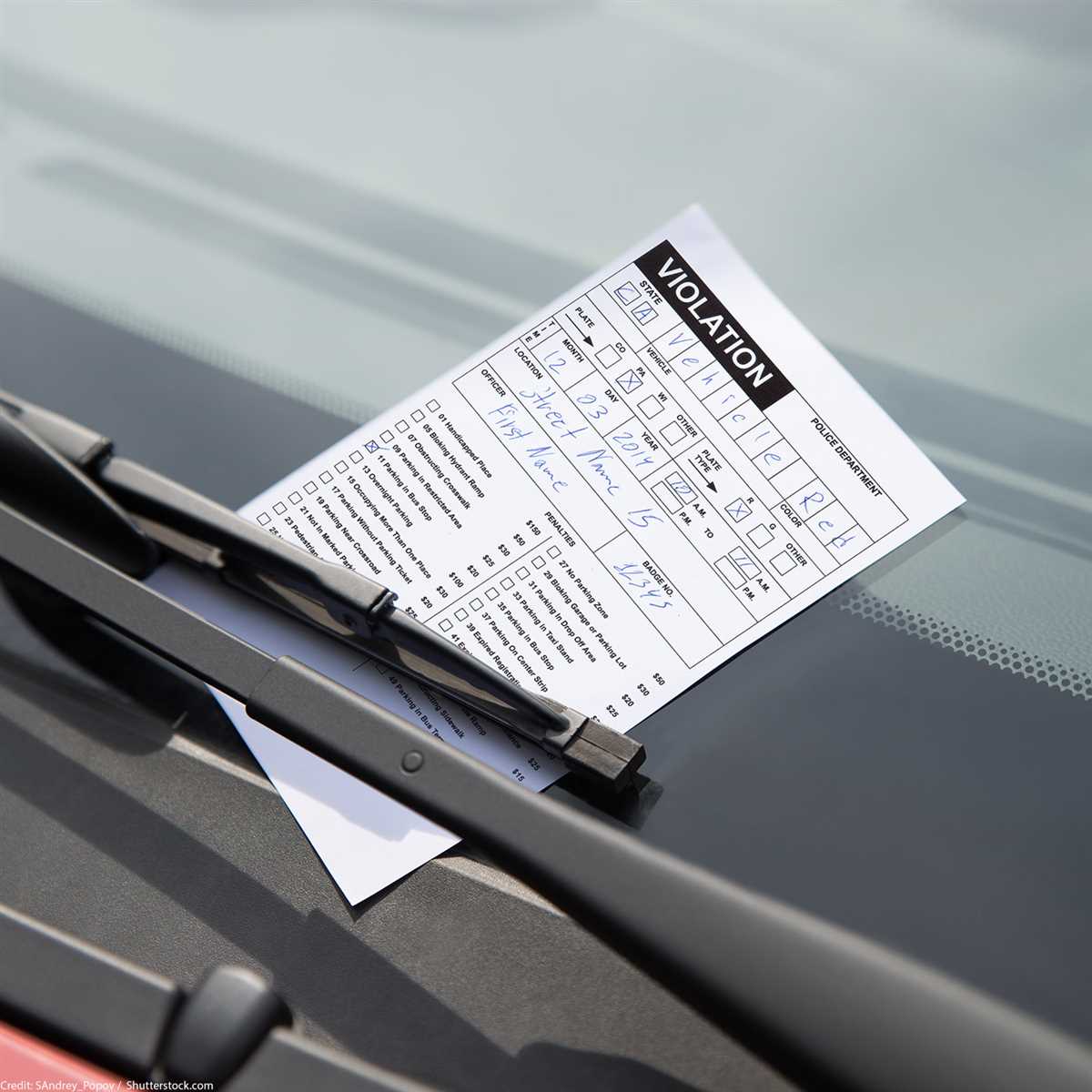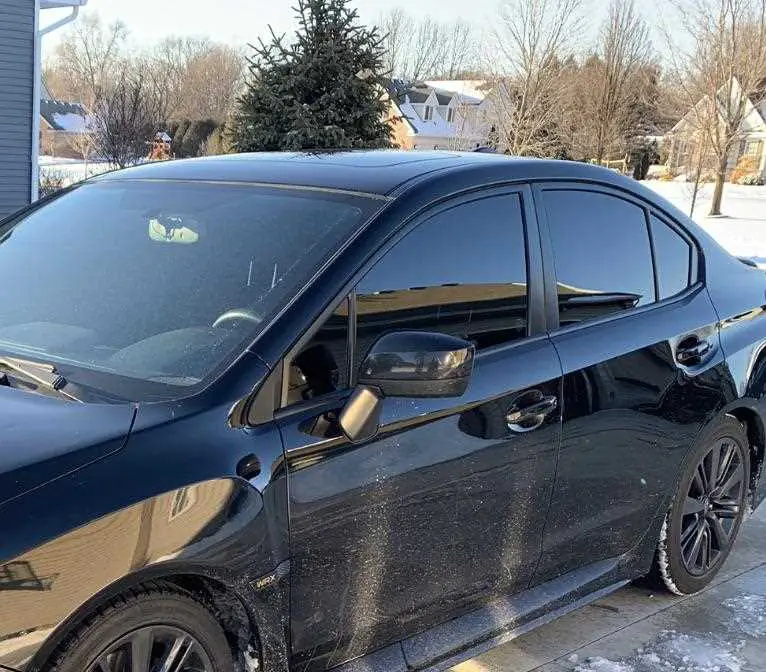Last Updated on February 4, 2024 by Vadym

Getting a window tint ticket can be a frustrating experience, especially if you believe that your tint is legal. However, there are steps you can take to have the ticket dismissed and avoid the associated fines and penalties. By understanding the laws and regulations surrounding window tinting in your area and gathering the necessary evidence, you can increase your chances of successfully fighting the ticket.
1. Know your local laws
Before you can successfully fight a window tint ticket, it’s important to familiarize yourself with the laws and regulations governing window tinting in your area. These laws can vary from state to state and even from locality to locality, so it’s crucial to do your research and understand the specific requirements for your jurisdiction. Pay attention to factors such as the maximum allowable tint darkness and the legality of certain tint colors.
2. Gather evidence
Once you are familiar with the local laws, it’s time to gather evidence to support your case. Take clear photographs of your vehicle’s windows from both the inside and the outside, showing the level of tint darkness. You can also gather receipts or other documentation that proves your tint is within the legal limits. These pieces of evidence will be crucial in demonstrating that you were in compliance with the law at the time you received the ticket.
3. Consult with a lawyer
If you are serious about getting your window tint ticket dismissed, it may be beneficial to consult with a lawyer who specializes in traffic law. They will be able to provide you with expert advice based on your specific situation and help you navigate the legal process. A lawyer can review your evidence, assess your chances of success, and guide you through any necessary court proceedings.
4. Contest the ticket in court
Once you have gathered your evidence and consulted with a lawyer, it’s time to contest the ticket in court. Follow the instructions provided on the ticket or contact the appropriate court to determine how to proceed. Present your evidence to the judge and argue your case, making sure to emphasize your compliance with the local window tinting laws. Be prepared for the possibility of a trial, and remember to remain calm and respectful throughout the process.
Remember, getting a window tint ticket dismissed requires careful preparation and attention to detail. By knowing the local laws, gathering evidence, and seeking professional advice, you can increase your chances of a successful outcome. Stay informed, be prepared, and fight for your rights.
Understanding Window Tint Laws

When it comes to window tinting on vehicles, it is important to understand the laws and regulations in your area. Window tint laws vary from state to state, so what may be legal in one state may not be in another.
The purpose of window tint laws is to ensure safety on the road. Excessive window tint can impair visibility for both the driver and surrounding drivers, which can lead to accidents. Additionally, law enforcement needs to be able to see inside a vehicle for identification and safety purposes.
Window tint laws typically regulate the percentage of light transmission allowed through the tinted windows. This is known as the Visible Light Transmission (VLT) percentage. Different states have different VLT percentage requirements for different windows on a vehicle, such as the front windshield, front side windows, rear side windows, and rear windshield.
Violating window tint laws can result in a ticket, fine, or even having to remove the tint from your windows. However, if you receive a window tint ticket and believe it was unjust or issued incorrectly, you may have options for getting the ticket dismissed. It is crucial to understand the specific laws in your state and gather evidence to support your case.
To ensure compliance with window tint laws, it is recommended to consult your state’s Department of Motor Vehicles or local law enforcement agency for specific regulations. They can provide you with information on the legal VLT percentages and any additional restrictions on window tinting in your area.
It is important to keep in mind that even if your window tint meets the legal requirements, law enforcement officers still have the discretion to issue a ticket if they believe it is obstructing visibility or compromising safety.
By understanding and following the window tint laws in your area, you can avoid potential tickets and ensure the safety of yourself and others on the road.
Knowing the Legal Limit
When it comes to window tinting, it’s important to know and adhere to the legal limits set by your state or local authorities. The darkness of your window tint is measured by the Visible Light Transmission (VLT) percentage, which refers to the amount of light allowed to pass through the window.
The legal limits for window tint vary from one jurisdiction to another, so it’s essential to familiarize yourself with the specific regulations in your area. Typically, the legal VLT limit ranges from 70% to 35%, meaning that at least 35% of light must be able to pass through the tinted window.
It’s crucial to understand that exceeding the legal limit puts you at risk of receiving a window tint ticket. Law enforcement officers have tools to measure the VLT percentage of your window tint and determine if it complies with the law. If your tint is found to be too dark, you may face fines, penalties, or have to remove the tint altogether.
To avoid any legal issues, it’s recommended to choose a reputable window tinting provider who is knowledgeable about the regulations in your area. They can guide you in selecting a tint that is compliant with the law, ensuring that you don’t run into problems with law enforcement.
Additionally, staying informed about any changes or updates to the window tinting regulations in your area is crucial. Laws can be updated periodically, and it’s your responsibility as a vehicle owner to stay up to date and ensure your window tint remains within the legal limit.
Remember, complying with the legal limit for window tint not only helps you avoid getting a ticket but also keeps you and others safe on the road. It ensures proper visibility for both drivers and pedestrians, reducing the risk of accidents and improving overall road safety.
Checking State-Specific Regulations
When facing a window tint ticket, it’s important to familiarize yourself with the regulations specific to your state. Each state has its own laws and guidelines regarding window tinting, including permissible levels of tint darkness and any additional requirements for vehicles.
One way to check these regulations is by visiting the official website of your state’s department of motor vehicles (DMV). They usually have a section dedicated to vehicle regulations, which includes information on window tinting. Look for any charts or tables that outline the allowed percentages of light transmission and reflectance for each window of a vehicle.
Alternatively, you can also consult local law enforcement agencies for information on window tinting regulations. They may have pamphlets or handouts available that detail the legal limits for tint darkness in your state.
It’s important to note that regulations may vary not only by state but also by the type of vehicle. Different limits may apply to passenger cars, trucks, and SUVs. Make sure to check the specific regulations for your vehicle type.
Once you have familiarized yourself with the regulations, you will be better equipped to contest a window tint ticket. If your tint falls within the legal limits, you can gather evidence such as window tint measurement certificates or receipts from a professional installation to support your case.
| State | Allowed Tint Darkness | Additional Requirements |
|---|---|---|
| Alabama | 32% for front side windows; any darkness for back side and rear windows | – |
| Alaska | 70% for front side windows; any darkness for back side and rear windows | – |
| Arizona | 33% for front side windows; any darkness for back side and rear windows | – |
| Arkansas | 25% for front side windows; any darkness for back side and rear windows | – |
| California | 70% for front side windows; 70% for windshield | 4 inches from the top of windshield; windows to left and right of driver |
Taking Corrective Measures
If you have received a window tint ticket and want to get it dismissed, there are some corrective measures you can take. Follow these steps to increase your chances of having the ticket dismissed:
1. Understand the local laws: First and foremost, familiarize yourself with the specific window tint laws in your state or city. Each jurisdiction may have different regulations regarding window tint darkness and reflectivity levels. Knowing the laws will help you understand whether or not your tint is in compliance.
2. Check the accuracy of the ticket: Carefully review the ticket issued to you to ensure that all the information is correct. Look for any errors, such as misspelled names, incorrect vehicle details, or inaccurate violation codes. If you find any discrepancies, it could potentially weaken the ticket’s validity.
3. Fix the window tint issue: If your window tint darkness or reflectivity levels are not in compliance with the law, take steps to rectify the issue. Contact a professional window tinting service to determine the necessary adjustments that need to be made to bring your tint within legal limits. Having your tint fixed and providing proof of correction can showcase your willingness to comply with the law.
4. Gather evidence: Collect evidence to support your case. Take photographs of your vehicle’s windows before and after making the necessary adjustments. Provide documentation of any modifications or repairs made to your tint. This evidence can help demonstrate your diligence in resolving the issue.
5. Consult an attorney: If you believe you have a strong case for dismissal, consider consulting with a traffic attorney who specializes in window tint violations. They can provide guidance and represent you in court, presenting your evidence and arguing on your behalf.
6. Prepare for court: If you decide to fight the ticket in court, make sure you are well-prepared. Organize all the evidence, documentation, and witness statements that support your case. Dress appropriately and present yourself professionally. Be respectful and follow courtroom etiquette during the proceedings.
7. Present your case: In court, present your case clearly and confidently. Use the evidence you have gathered to argue against the ticket’s validity. If you have consulted with an attorney, they can help you navigate the legal process and present your case effectively.
Remember, the specific steps to get a window tint ticket dismissed may vary depending on your location and the circumstances surrounding your ticket. It is always recommended to consult with a legal professional for personalized advice.
Removing or Adjusting the Window Tint
If you have received a window tint ticket, one option to have it dismissed is to remove or adjust the tint on your vehicle’s windows. Here are some steps to follow:
1. Check the legal tint limit: Before removing or adjusting the tint, it is important to know the legal tint limit in your area. This information can usually be found on your state’s Department of Motor Vehicles (DMV) website.
2. Gather the necessary tools: To remove the window tint, you will need a few tools such as a razor blade, a heat gun or hairdryer, a spray bottle filled with a soapy water solution, and a microfiber cloth.
3. Start with the rear window: Begin the process by working on the rear window. Use a heat gun or hairdryer to heat up the tint, which will make it easier to remove. Use the razor blade to carefully peel off the tint starting from one corner. Be sure to peel off both the tint film and the adhesive residue.
4. Move on to the side windows: Once the rear window is completed, proceed to the side windows. The process is similar – heat up the tint using the heat gun or hairdryer, and then use the razor blade to peel off the tint and adhesive residue.
5. Clean the windows: After removing the tint, it is essential to thoroughly clean the windows. Use the soapy water solution to spray the windows and wipe them clean with a microfiber cloth. This will help remove any leftover adhesive residue and ensure that the windows are clear and transparent.
6. Adjusting the tint: If the tint on your windows is within the legal limit but slightly darker, you may adjust it to comply with the regulations. This can be done by using a window tint film that has a lower tint percentage. Ensure that the adjusted tint meets the legal requirements to avoid future tickets.
7. Verify compliance: Once the tint has been removed or adjusted, check if it complies with the legal limit. You can use a tint meter, available at most automotive shops, to measure the tint percentage. Make sure it falls within the acceptable range to prevent any further issues with law enforcement.
By following these steps, you can remove or adjust the window tint on your vehicle and increase your chances of having a window tint ticket dismissed.
Providing Evidence of Correction
If you have fixed the window tint violation after receiving the ticket, you will need to provide evidence of the correction to have the ticket dismissed. This evidence usually includes a receipt or invoice from a professional window tinting service or a statement from a qualified installer that confirms the window tint now complies with the local regulations.
When gathering evidence, make sure it clearly states the date of correction and describes the actions taken to correct the violation. It is crucial to provide sufficient proof that demonstrates compliance with the window tint regulations, as this will significantly increase your chances of getting the ticket dismissed.
Additionally, take photographs of the corrected window tint to include as additional evidence. These photos should clearly show that the window tint now meets the legal requirements. Make sure the photographs are clear and accurately represent the changes made.
| Evidence Checklist: |
|---|
| Receipt or invoice from a professional window tinting service |
| Statement from a qualified installer |
| Photographs of the corrected window tint |
Once you have gathered all the necessary evidence, make copies of each document. It is beneficial to keep the original documents in a safe place and provide the court with the copies. This way, you can ensure that you have the original evidence in case it is needed in the future.
When submitting the evidence to the court, it is crucial to follow the instructions provided by the court clerk. Ensure you provide the required number of copies as specified and any accompanying forms or paperwork. Make sure to keep any receipts or proof of submission for your records.
By providing strong evidence of correction, including receipts, statements, and photographs, you greatly improve your chances of having your window tint ticket dismissed. Taking the time to gather and organize your evidence properly can make a significant difference in the outcome of your case.
Consulting with a Lawyer
If you have been issued a window tint ticket and are unsure of how to proceed, it may be beneficial to consult with a lawyer who specializes in traffic violations. A lawyer can provide you with the expert guidance and legal advice you need to effectively navigate the ticket dismissal process.
During your consultation, the lawyer will review the details of your ticket and assess the strength of your case. They will explain the local laws and regulations regarding window tinting and help you understand your rights and potential defenses. Additionally, they can inform you of the potential consequences associated with the ticket, such as fines, points on your driving record, or the need to remove the tinting.
Furthermore, a lawyer experienced in handling window tint tickets will be familiar with local courts and their procedures. They can guide you through the process, help you gather the necessary evidence, represent you in court if needed, and negotiate with the prosecutor on your behalf. This professional assistance can significantly increase your chances of getting the ticket dismissed.
| Benefits of consulting with a lawyer: |
|---|
| Expert guidance and legal advice |
| Understanding of local laws and regulations |
| Evaluation of your case strength |
| Explanation of potential consequences |
| Familiarity with local courts and procedures |
| Assistance with gathering evidence |
| Representation in court, if needed |
| Negotiation with the prosecutor |
| Increased chances of ticket dismissal |
Remember, consulting with a lawyer is an investment in your future. They can help you avoid fines, protect your driving record, and potentially save you money in the long run. Consider reaching out to a qualified lawyer today to discuss your window tint ticket and explore your legal options.
